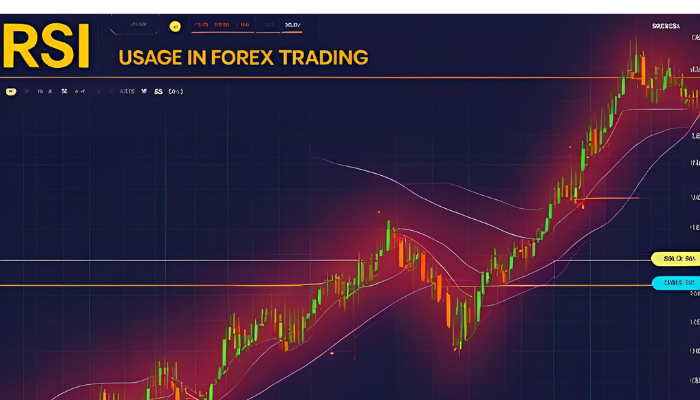Last Updated on August 1, 2025 by Deon
Relative Strength Index (RSI) is a momentum oscillator for measuring value in technical analysis, especially for traders in forex. J. Welles Wilder Jr. developed it, and it calculates the fluctuations in prices to give an insight into whether the asset was likely to be either overbought or oversold. Thus, it may reverse or continue with the trend. You can benefit from the detailed discussion below about RSI usage in forex trading.
What Is the Relative Sensitivity Index and How Does it Function
RSI stands for Relative Strength Index and ranges between 0-100, typically displayed beneath main price charts. Calculated by comparing average gains with losses over an extended period, i.e., 14 periods for daily charts or 24 for hourly, its calculation determines its range as an oscillator metric.
It is a calculation that traders can get a real-time ratio of market momentum, and it can give an opinion on whether the current price action is becoming overextended or less emphatic.
RSI Usage in Forex Trading: Identifying Overbought and Oversold Conditions
RSI’s primary use is in observing overbought or oversold zones:
Overbought: RSI 70
When the RSI of an asset moves above 70, it means that the asset has moved too fast, and it might require a correction or pullback. Traders may jump at a chance to sell to take their profits.
Oversold: RSI 30
When the Relative Strength Index of an asset goes below 30, it means that the asset has probably dropped too fast. It implies that it is at the onset of an upturn or bullish turnaround and offers buying chances.
But one should bear in mind that even having an RSI score that exceeds 70 does not mean that there will be an immediate decline, and a score below 30 does not promise that there will be an immediate recovery as well.
Use RSI Divergence to See Reversals
Divergence between price action and the RSI is an extremely powerful reversal signal:
Bullish Divergence
Clashes between prices and RSI show decreasing bearish momentum and possible upward reversals, and moves in price movements.
Bearish Divergence
This trend suggests a bullish flattening off and can be a precursor of another reversal phase soon.
Such discrepancies are especially intriguing to take note of when they take place concurrently with any significant support or resistance mark.
Confirm Trend with RSI Usage in Forex Trading
Beyond reversals, RSI can also verify ongoing trends:
In an Uptrend
To provide dynamic support to an upward movement, an RSI often remains above 50. However, it fluctuates between 40 and 50 during any decline, acting like dynamic support for that direction.
In a Downtrend
In general, an RSI remains below 50 during a downtrend, with pullbacks typically stopping between 50-60 points as dynamic resistance.
An initial cross above 50 can confirm bullish momentum, while any such crossing below this mark could indicate bearish strength.
Learn RSI Usage in Forex Trading and Cope with the Complexities of the Trade World
Relative Strength Index is another indicator that money changers cannot live without, which gives them helpful tools. It may aid in making market momentum determination, as it can identify overbought and oversold conditions, as well as give early warning signs about a situation with divergences.
Although RSI is useful, traders must not use it alone to make sure that the trend is large. Rather, subsequent extra procedures such as price action analysis, the moving averages, or support and resistance analysis may make it more dependable when applied together.
Its sensitivity can be adjusted by altering the period, like using shorter periods for faster signals and longer ones for smoother signals. One of the top-ranked platforms, Neuron Markets, gives you complete learning about RSI usage in your trade journey. By learning RSI and using it as part of their overall trading strategies, traders can sharpen their decision-making abilities and more easily navigate the complexities of forex market trading.




